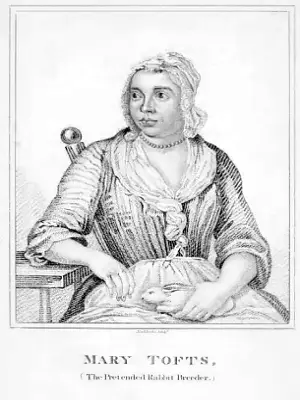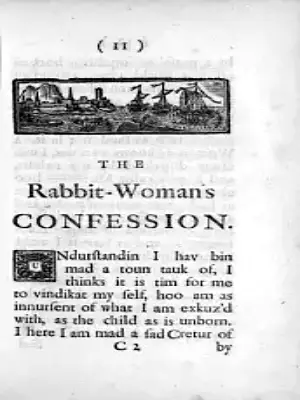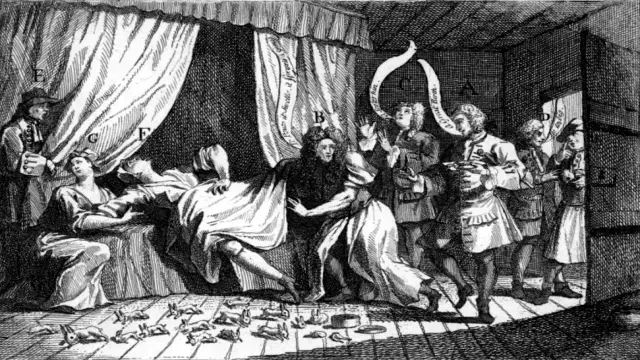When the scandal surrounding Mary Toft broke, fingers pointed, accusations flew, and reputations crumbled. It’s no surprise that many involved tried to distance themselves from the entire mess. Some claimed that if they had been consulted, they would have seen through the deception right away. Others insisted that their involvement was crucial in exposing the fraud.
Many experts who had been fooled lamented that they should have spoken up sooner. Meanwhile, some chose silence, hoping that by keeping their heads down, the scandal would fade away. Then there were those who had nothing to do with the case but seized the opportunity to settle scores or stir the pot.
Sir Richard Manningham’s Response
One of the first to retaliate was Sir Richard Manningham, a respected surgeon. He published a detailed account titled An Exact Diary shortly after the scandal erupted. Manningham made it clear that he recognized a fraud when he saw one. He named those who had been deceived and those, like himself, who suspected the case was a hoax from the start.
Nathaniel St André, another key figure, had gambled and lost. He published his account early, hoping to gain fame. However, when the truth came out, his lack of judgment was exposed. His attempt to retract his statements only made matters worse.

The Satirical Confession
In a twist, a supposed confession from Mary Toft appeared, written in broken English to mock her alleged illiteracy. This satirical piece not only targeted Toft but also ridiculed the medical professionals involved. St André was described as a “pretty gentleman” with a charming rabbit, while Manningham was portrayed as a long-nosed man obsessed with performing operations.
The satire was crude but not the worst. Many anonymous writers took the opportunity to poke fun at the situation. One poem suggested that the pains Toft experienced were not those of an honest woman, while another claimed that a doctor found no rabbit but instead discovered a hare.
Artistic Responses
The case of Mary Toft inspired artists as well. William Hogarth created two engravings related to the scandal. The first, Cunicularii: or, The Wise Men of Godliman in Consultation (1726), shows Toft lying in bed surrounded by physicians, with rabbits scurrying around. The second, Credulity, Superstition and Fanaticism (1762), depicts Toft on the chapel floor with rabbits emerging from beneath her dress.
The Aftermath
You might think that after the initial uproar, everyone would return to their normal lives. However, that was far from the case. The scandal continued to ripple through society.

William Whiston, who succeeded Isaac Newton as the Lucasian Professor of Mathematics at Cambridge, became embroiled in the discussion. Whiston was a mathematician, historian, and theologian known for his translations of the Jewish historian Josephus. He also held some unconventional beliefs, such as the idea that Noah’s flood was caused by a comet.
Whiston’s views led to his dismissal from Cambridge, but he remained undeterred. He believed the Bible contained prophecies about impending disasters, including a prediction that menstruating women would give birth to monsters.
Whiston’s Connection to the Hoax
In his Memoirs, published in 1753, Whiston examined the prophecies in the biblical Apocrypha, particularly in the book of Esdras. He found a passage that suggested confusion and monstrous births. Whiston looked to the case of Mary Toft as evidence of these prophecies coming true.
Despite the widespread ridicule of the story, Whiston concluded that since Toft was never tried for her alleged crimes, there must have been some truth to her claims. He argued that this was proof of the prophecies in Esdras, dismissing skeptics as mere scoffers.
Legacy of the Rabbit Hoax
The Mary Toft scandal serves as a reminder of how easily people can be deceived and how quickly reputations can be tarnished. It also highlights the role of satire and art in responding to societal issues. The case remains a fascinating chapter in the history of medical fraud and public gullibility.
In the end, the rabbit hoax is not just a story about a woman who claimed to give birth to rabbits. It reflects the complexities of human nature, the thirst for fame, and the consequences of deception. The scandal also shows that conspiracy theories are not a modern invention; they have existed for centuries, often fueled by fear and misunderstanding.
As we look back on this bizarre episode, we can appreciate the lessons it teaches about critical thinking and the importance of questioning the extraordinary claims we encounter. The rabbit hoax may have faded from public memory, but its implications continue to resonate today.

